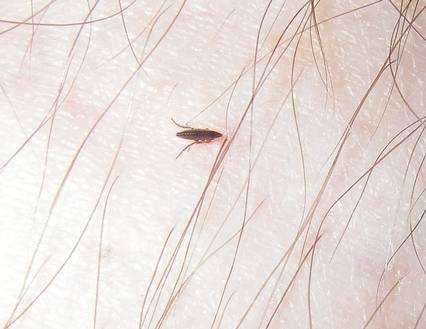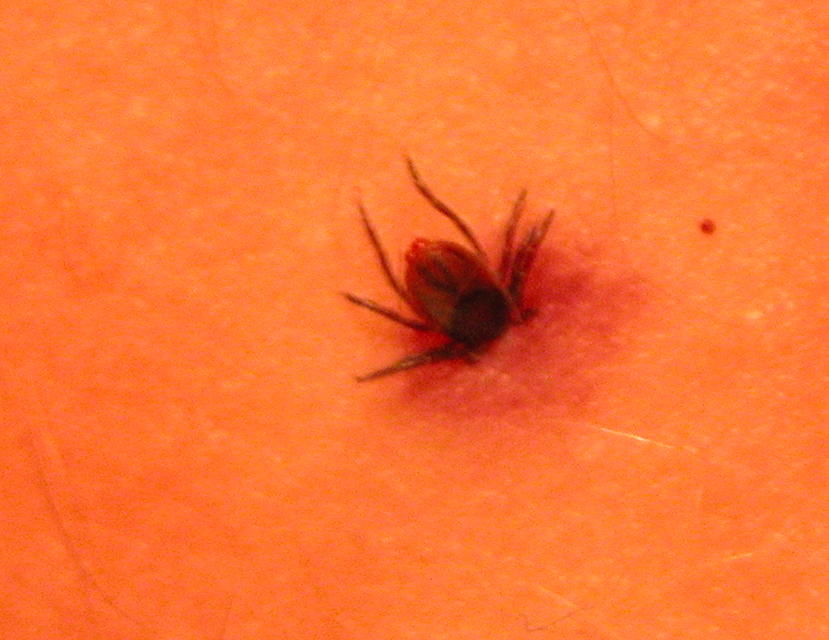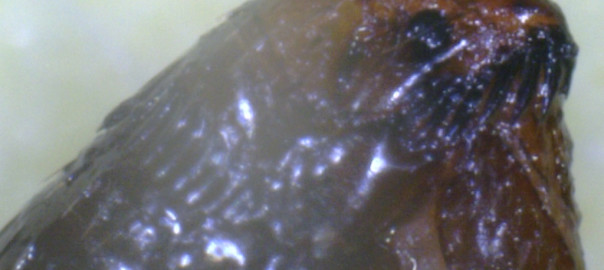#1 Reason to Keep Your Home Flea Free
Fleabites can cause massive irritation and itching in humans and in pets as well. However, while the itchy annoyance is one good reason people try to prevent fleas from infesting a home and from biting, it should not be the only one.
Fleabites on Humans and Pets Can Make Them Sick
In fact, fleabites can cause your pets’ fur to fall out, your own hair to fall out, cause flu like symptoms, cause a coma and even death, as we mentioned in this post.
Fleas Carry Diseases
Researchers have found that the Oriental Rat and Cat Fleas carry about a dozen or so different diseases and parasites, some of which coexist within the fleas’ saliva while not affecting the flea itself.

Cat Flea Biting a human by Denni Schnapp
The diseases and parasites do affect humans and pets, however, causing a variety of illnesses and other problems.
Plague, Bubonic Plague, Pneumonic Plague
Different mutations of the Yersinia pestis, also known as Y pestis, bacteria causes Plague, Bubonic Plague, and Pneumonic Plague.
Plague affects the blood system, bubonic plague affects the lymph nodes called buboes, and Pneumonic Plague affects the lungs. A fleabite can transmit all three of the Plague variations.
The following photo via the CDC shows examples of each version of Plague:

Plague Symptoms Credit: CDC
While the Oriental Rat flea is the usual suspect, since it tends to prefer biting rats – the usual carriers of the Y pestis bacteria – other flea types can transmit the Plague by biting any infected animal, and then biting an uninfected animal or human.
Animals that have been known to carry Y pestis bacterium include chipmunks, prairie dogs, and voles.
According to the CDC, general Plague symptoms include headache, swollen lymph nodes – the buboes, which is where bubonic plague gets its name – fever, and exhaustion.
Murine Typhus
Murine Typhus, also known as Endemic Typhus Fever, is caused as a result of the Rickettsia typhi and Rickettsia felis bacteria, according to the CDC. These are related to Rocky Mountain Spotted fever, which is transmitted via ticks.

Deer ticks also carry and spread disease Photo via John Carleton
Fleas transmit the bacteria in its fleabites on humans and pets.
Seen most often in Asia, Africa, and the Mediterranean Basin, Maurine Typhus is also found in the southwestern and southern United States including California, Arizona, Texas and Hawaii.
The fleabites don’t usually transmit the infection directly, though.
Instead, when fleas bite (eat or feed on) humans and pets, they defecate at the same time. The bites cause itching, which humans and pets scratch. The scratching or rubbing motion causes the waste to enter the bloodstream, whether the scratching broke the skin or not – a fleabite is a break in the skin.
Symptoms of endemic typhus include headaches, nausea and, of course, the massive fever from which the disease gets its name.
Both the Plague and murine typhus/Typhus are treatable with antibiotics if doctors can catch the disease early enough. Keep in mind, though, that fleas can carry other diseases as well, and the simple act of fleas biting humans can transmit the diseases easily.
This should be the first reason to want to prevent infestations and fleabites on humans and pets.
Stay tuned for our next post in which we will cover some of the other diseases that fleas can spread via their bites on humans.

